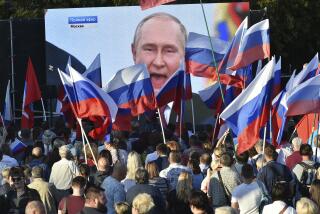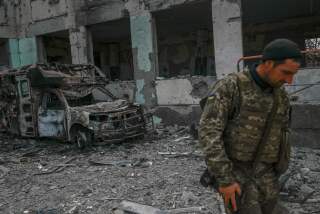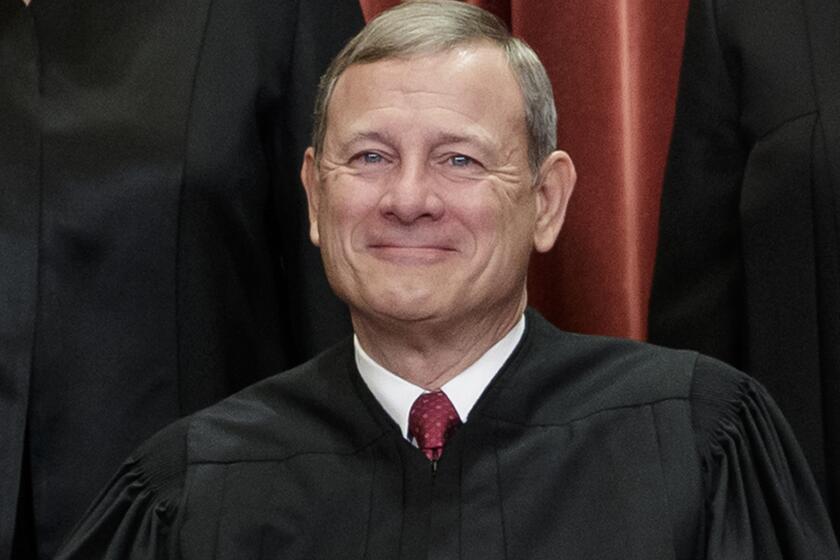What’s Behind This Amazing Turn? : Perestroika, but Also Reagan’s Tenacity, Readiness to Negotiate
- Share via
The two men will be meeting for the fourth time, and this occasion may well turn out to be the most significant--not only insofar as personal contacts between Ronald Reagan and Mikhail S. Gorbachev are concerned but also in the entire history of post-World War II encounters between Presidents of the United States and heads of the Soviet regime.
The background and circumstances of the Moscow summit meeting endow it with vast potential significance not only for the two countries but for the entire world as well. Two weeks before the meeting the Soviet army began evacuating Afghanistan--the first time in 40 years that the Kremlin has appeared ready to stop supporting a client communist regime by armed force and to risk its overthrow. Thus what has been a cardinal goal of American foreign policy at least since 1947--containment and even “rollback” of Soviet imperialism--finally seems to be in sight.
Equally weighty in its potential implications is the progress that both sides have made in synchronizing their views on control and reduction of nuclear arms. The treaty on intermediate-range nuclear forces may be ratified by the Senate by the time President Reagan steps down from Air Force One. The two leaders will undoubtedly pledge to intensify their efforts to reach an agreement on strategic nuclear weapons. There will be discussion and possibly agreements on a number of less momentous issues.
There are bound to be disagreements as well. The Soviets are unlikely to drop entirely their objections to the Americans proceeding with their “Star Wars” program. The Americans will urge their hosts to observe human rights and to allow freer emigration--something that even in the era of glasnost must lead to an argument.
Yet, barring something unexpected, the contentious questions will be handled through a dialogue rather than becoming the subjects of a confrontation. Nor should we think of the personal aspects of the summit as of secondary importance. It is of tangible political as well as symbolic significance that the most conservative among post-war American Presidents should be going to, and be respectfully received in, the capital of the country that he had once described as “the evil empire.”
What has led to this amazing turn of events? Well, to some extent the requirements of perestroika . The efforts to impart new dynamism to the economy, to restructure Soviet society so as to remove the lingering effects of Stalinism and of the political malaise of the Brezhnev era, do call for a greater concentration on domestic issues and, hence, new and more extensive detente in East-West relations. And so does the Kremlin’s desire to secure greater trade, infusion of technology and credits from the capitalist world. But, quite apart from such considerations, there were signs even antedating Gorbachev’s ascent to power that some within the leadership felt that the Soviet Union was dangerously overextended insofar as its expansionist strivings were concerned. They urged retrenchment, as well as the need to lower the level of tension between the super-powers. And the present general secretary has been more emphatic and explicit than his predecessors were in maintaining that no efforts must be spared to avoid the danger of a nuclear confrontation, and that no margin of military superiority on either side could keep such a confrontation from having cataclysmic results for everyone.
In addition to such common-sense considerations, Gorbachev’s opening toward the United States has also been influenced by political reasons. The general secretary’s position has become quite vulnerable, as many within the Kremlin inner circle feel that he has carried his policy of glasnost to the point where its reverberations threaten the very foundations of the Soviet system. But much as Gorbachev may have become unpopular with some of his Politburo colleagues, they are less likely to try to overthrow him as long as he is personally involved in delicate negotiations with the United States and stands in the eyes of his own people, as well as the West, as the champion of peace and a general alleviation of international tensions. Successful “summitry” is then a kind of political reinsurance for Gorbachev.
Skeptics will question the utility of the Moscow meeting, as well as the likelihood of the present Soviet-American rapprochement’s developing into a long-term detente. Indeed, it is unwise to conclude that the men in the Kremlin have now irreversibly abandoned their role as international mischief-makers and are firmly determined to cultivate their own garden.
On balance, however, there is room for cautious optimism. This optimism must be accompanied by the realization that much of the favorable development in East-West relations has been due to facts other than just a change of heart on the part of the Soviets. Whatever its mistakes in other areas, the present American Administration has in its stance vis-a-vis the Soviet Union displayed a sound combination of tenacity and readiness to negotiate. For all of Reagan’s recent travails, he can congratulate himself that it was during his term of office that the Kremlin began to show readiness to reverse its previous policies of expansionism and attempted intimidation of the West. And so the prospects for peace and international stability will continue to depend not only on what happens in Moscow but also on America’s ability to display the right proportion of firmness and conciliation in its policies.
More to Read
Sign up for Essential California
The most important California stories and recommendations in your inbox every morning.
You may occasionally receive promotional content from the Los Angeles Times.










